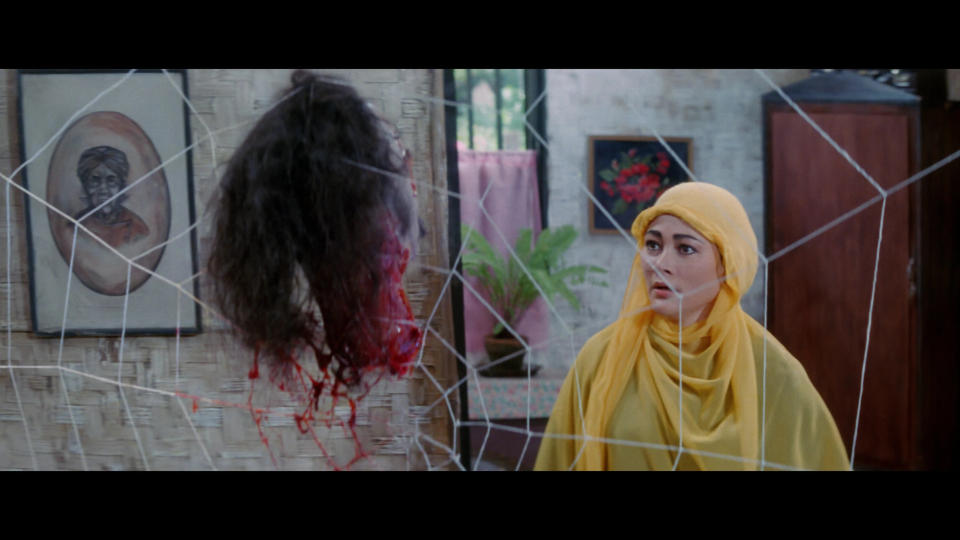Boutique Blu-ray Labels Keep Physical Media Alive — and Preserve Film History in the Process

The supposed demise of physical media has been well covered and long lamented, with each passing year bringing reports of yet another nail in the coffin of the once flourishing DVD and Blu-ray market. Fall 2023 brought a double whammy of bad news: Netflix shipped its final discs to customers before closing up its DVD department for good, and a month later, Best Buy announced that it would be phasing out the sale of physical media. Yet, while DVDs are no longer the massive revenue generator for studios that they were throughout the first decade of the 2000s, it has never been a better time to be a physical media enthusiast. Thanks to independent labels like Criterion, Kino Lorber, Shout! Factory, Arrow, Imprint, Indicator, and many others, every month sees the release of well over a dozen exceptional titles, often lovingly restored and with indispensable scholarly extras.
That we’re living in such a flourishing golden age in terms of quality, even as the economics seem increasingly discouraging, is thanks to an intrepid community of cinephiles. Their passion has led to boutique DVD and Blu-ray labels that release titles — both well-known and obscure — that might fall through the cracks if left to the vagaries of corporate overlords. The excellent coming-of-age film “Little Darlings,” for example, was released by Paramount in 1980 but never given a proper home video presentation until independent label Vinegar Syndrome’s new sub-label Cinématographe put out an exquisite 4K Blu-ray. While Paramount never saw the value in releasing the film in its correct aspect ratio or fidelity to its intended color and sound mix, Cinématographe producer Justin LaLiberty felt that licensing the title and creating a new transfer from the original negative was in keeping with Vinegar Syndrome’s mission to fill in the gaps of film history.
More from IndieWire
'Twisters' Super Bowl Teaser: Lee Isaac Chung Chases Blockbuster Storms in Sequel to 1996 Original
'Wicked' Teaser: Ariana Grande and Cynthia Erivo Defy Gravity in 'Wizard of Oz' Prequel
“The canon of American cinema from the late ’60s through the mid-’90s is bigger than ‘The Godfather,’ ‘Taxi Driver,’ ‘Nashville,’ ‘Blue Velvet,’ ‘Pulp Fiction,’ etc.,” LaLiberty told IndieWire, noting that, even when Cinématographe releases movies by major directors, it tends to focus on their lesser-known works. “Many of the filmmakers we revere haven’t had their entire story told,” he said.
Providing a sense of discovery for movie fans tends to be a motivating factor for many boutique Blu-ray producers, as Radiance founder Francesco Simeoni explains. “Radiance was created because I had my fill of major classics,” Simeoni told IndieWire. “While I was very fortunate to release so many of my favorites [when working for another label], from ‘Carrie’ and ‘Night of the Hunter’ to ‘Salvatore Giuliano’ and ‘Branded to Kill,’ I felt like I wasn’t finding new films anymore but going over ones I already knew.” Thus, Simeoni created Radiance to showcase filmmakers few viewers had ever heard of, like the great Italian director Luigi Comencini.

Similarly, Fun City Editions founder Jonathan Hertzberg created his label to shine a light on maverick directors like Arthur Barron (“Jeremy”), Norbert Meisel (“Walking the Edge”), and Ivan Passer (“Cutter’s Way”), and has also released boxed sets devoted to TV movies of the ’70s and ’80s that might otherwise be lost forever. He acknowledges that getting the word out about such movies is always difficult. “It’s a niche business, and we are often releasing films that are only known to a niche portion of that niche,” Hertzberg told IndieWire, adding that his job largely consists of “trying to get an audience to take a chance on something new, often by relating it to something better known to them.” Hertzberg also notes that while the customer base for boutique Blu-ray labels is dedicated and passionate, it is also finite — a major challenge given the high costs involved with keeping a label running.
Those costs are largely front-loaded, as studios require minimum guarantees in the form of initial fees, as well as a percentage of royalties once the discs are released. One of the added difficulties is that no two studios are alike, and even for the same studio different titles dictate different terms. “Each studio has its own way of doing things,” Vinegar Syndrome‘s Joe Rubin told IndieWire. “If we want titles from their catalog, we have to bend to their rules; they’re not going to change things to suit us.” Rubin’s company has become one of the saviors of international cult cinema, restoring and preserving important independent titles alongside the movies they license from studios. That introduces its own set of challenges, especially since Vinegar Syndrome insists on presenting each film with an archival-grade restoration.
“The biggest challenge we tend to have when dealing with independents is tracing missing materials,” Rubin said. “We want each film we release to look as close as possible to the final answer print, and we never employ digital tools to alter the image in ways which would not have been photochemically possible at the time the film was made. The amount of time it takes to complete a restoration can be anywhere from weeks to months, depending on the condition of the materials.” According to Hertzberg, when dealing with independent films one must become a bit of a detective to hunt down the rights holder and find the best materials. “And then, can you make it make sense business-wise? It boils down to some combination of: Is the film available and can you afford it? Does it fit your brand identity or goals? Do you like it and to what degree? Are there accessible, extant materials from which to create a new master, or is there already a new master?”

With studios, a whole other kind of detective work may be required. “It’s a matter of internal clearances,” Rubin said. “Especially when dealing with films made before the digital era, music often wasn’t cleared for all distribution mediums. Or certain documents might be missing that will make a studio legal division uncomfortable with a license. Just as it can sometimes take years to find the rightful owner of an independent film and then many more years to track down suitable and complete film materials, it can take just as long for a studio license to work its way through all the layers of their internal legal system. Unlike with independent films, many internal parties must sign off on all license terms when dealing with studios. But we’re fortunate to work with people at all the studios who share our interest and passion in having their catalog titles restored and given quality home video releases, so they’ll go to bat for us on more difficult titles.”
Often, studios don’t have their own HD masters, which means an independent label must determine whether it can afford to create the new master itself. “The easiest kind of title to license and release is the one that’s been out 10 times before,” Simeoni said. “The hardest kind of release is the one where you need to dig to find the rights, where you need to dig to find the elements to restore it, where you need to find anyone alive who was there to talk about, to find experts who know the obscure film and can speak about it in an informative and interesting way.” Many Blu-ray labels survive by producing a mix of the two types of titles, but everyone who runs these companies agrees that the more challenging movies are also the more satisfying ones to release. “The reward is when we put one of these little-known films back out into the world and we witness the rediscovery of that film,” Hertzberg said.
The difficult detective work that’s often required to yield those rediscoveries is, for Rubin, its own reward. “Unearthing thought-to-be-lost film elements — which is what enables us to release something — is still the greatest pleasure,” he said. “And I’m pleased to say that we are still coming across amazing collections of lost and forgotten films.” This year, Vinegar Syndrome has already released “Santet” and “Santet 2,” an extraordinary pair of Indonesian horror films rarely screened in the United States. For LaLiberty, whether or not audiences embrace the films he and his peers release is less important than the fact that they maintain access to them. “At the end of the day, I want these films to be seen,” he said. “Even if they may not ultimately be celebrated, I just want them to be accessible and part of some historical record, whatever, or whoever’s, that may be.”
Best of IndieWire
Where to Watch This Week's New Movies, Including 'Argylle' and 'How to Have Sex'
Christopher Nolan's Favorite Movies: 40 Films the Director Wants You to See
Sign up for Indiewire's Newsletter. For the latest news, follow us on Facebook, Twitter, and Instagram.

